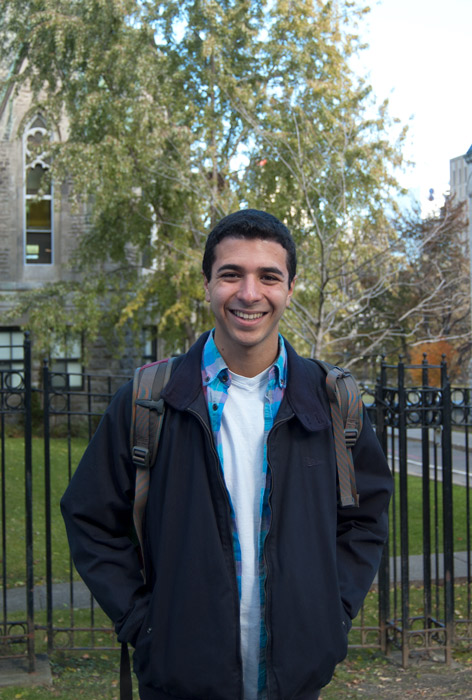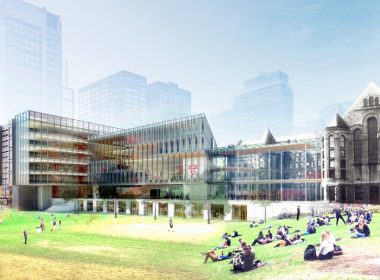Most engineering students take on a year-long project during their final year at McGill, where students must work with a professor or in an industry position. When Yarden Arane, U3 Software Engineering, had to pick his, he chose Professor Jeremy Cooperstock, the director of the Shared Reality Lab at McGill.
“[I] approached Professor Cooperstock and he gave [me] a proposal,” Arane said. “[Because] the Shared Reality Lab is a giant AI [Artificial Intelligence] research machine, [the project] would involve using AI to build augmented realities—similar to Oculus Rift.”
Arane has been working on this project with fellow U3 Software Engineer students Daniel Macario and Brett Leighton. For the past year, they’ve been tackling quite a complex issue.
“We’re tying to do a proof of concept for a crowd-sourced, machine-learning, event detection [robot],” Arane explained.
A proof of concept is the first step towards deciding whether or not a specific method is feasible; it’s the theory before the application. Their idea—machine-learning event detection—involves building a robot that is able to determine the events in real time.
“There are already a lot of [robots] out there that can [recognize] an event,” Arane said. “[However], they’re all very catered for a specific event—it’s not generalized.”
Machine-learning robots, like the one they’re hoping to develop, have a variety of applications, but require huge amounts of data to work. This is because the computer must essentially be ‘taught’ what an event is—for example, a kiss—by showing it the event a thousand times.
“To get all this data, we want to crowd-source YouTube videos to the general public, [so] they can start labelling events in the video,” Arane said. “[For example], they can mark an event where three people meet up in an intersection, [or] when a fire is moving in a certain direction.”
These labels will then get fed into their data system, which can be used to develop algorithms that will allow a computer to detect in real time when these events are occurring.
“The applications [for something like this] are wide,” Arane said. “[It can be used in] surveillance, safety, [and particularly] in the medical field.”
In theory, a computer program like this could allow surgeons to use a robot instead of another nurse or physician to detect an aneurysm, heart failure, or a collapsing lung. Using a machine could mean faster, more accurate, and reproducible results.
Since starting this project, Arane has encountered a number of programs and languages that he’s never worked with before—but which are necessary to develop these algorithms. This has caused some unpredicted setbacks.
“This was definitely an extremely daunting project to take on,” Arane explained. “[Macario, Leighton, and I] knew nothing going into the project—the first month and a half was just pure research—going into the field, contacting people, and reading papers.”
They first had to deal with getting dependencies—the programs and languages needed to run the project—on their computers. They expected the task to take around 30 minutes, but it ultimately ended up taking a week and a half.
“A lot of libraries are poorly documented or maintained,” Arane said. “[We were] jumping from language to language, and it was definitely a frustration, but [we] got past it.”
Arane and his partners just finished their first prototype last week. The prototype is a collection of concepts and tools that could be later combined to build their computer program. Their next challenge is to come up with a full, cohesive system design which they’ll be able to use to begin their data collection.
“Big-data machine learning is something the world [and I] are very interested in at the moment,” Arane said.
He hopes to continue in the field of machine-learning, and is currently looking for jobs in this field.
Without the exposure and experience he had gained from his time in Cooperstock’s lab, Arane would not have known whether or not machine-learning was a good fit for him, thus, he encourages young engineers to do the same.
“Don’t do something you’re familiar with,” said Arane. “Try to go deep and try to learn something [….] I’m so grateful I did that.”







